
OR
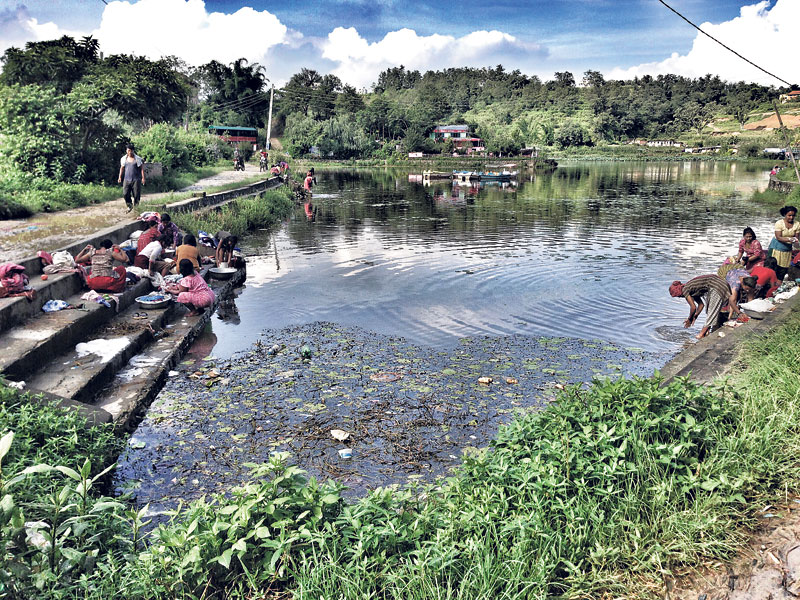
KATHMANDU, Sept 23: This project started out as a month-long series on social media (Instagram and Facebook) during the month of March this year.
Some of the issues covered by the series are menstruation taboos/practices, affirmative action for women, intersectionalities of caste and gender, land rights, women’s role within Hinduism, food security, labor migration, and how women are missing from data, among others.
The title itself is deliberate and the brackets both challenge the assumption that most women do not work (especially in South Asia) and to show the range of their personal and professional roles.
Without knowing it was leading to a series, I had been taking photos of women for the last six years during my many travels across Nepal and India. The most interesting part about the spontaneous project was the reception from friends and acquaintances across the world. The diversity of issues raised by each picture seemed to affect people differently and even compelled some to relate/share their own similar experiences.

This is a mother-daughter duo in Janakpur, Nepal with the mother carrying a tiffin box that captured from a rickshaw ride. The photo instantly transports me to my rushed morning commute to school as a kid when I struggled to match the fast steps of my mother who was late to work again but who wouldn’t leave without seeing me safely at school.
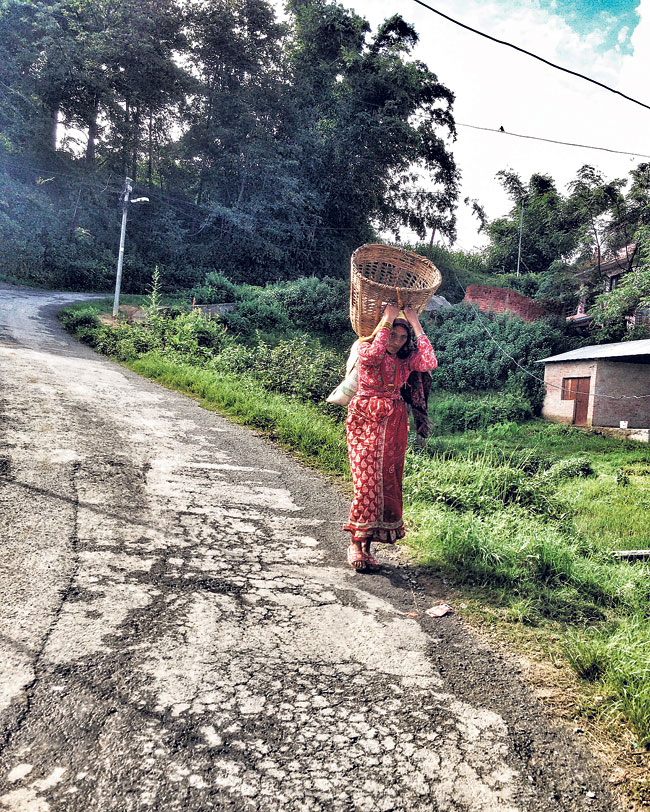
A woman carries grains in a traditional doko on her way to the local mill in the suburbs of Kathmandu valley. One only has to travel 10 km from the city center to see women involved in traditionally agrarian gendered roles – spending their days in gathering grass and fodder for their cattle, involved with harvesting and management of the grains.
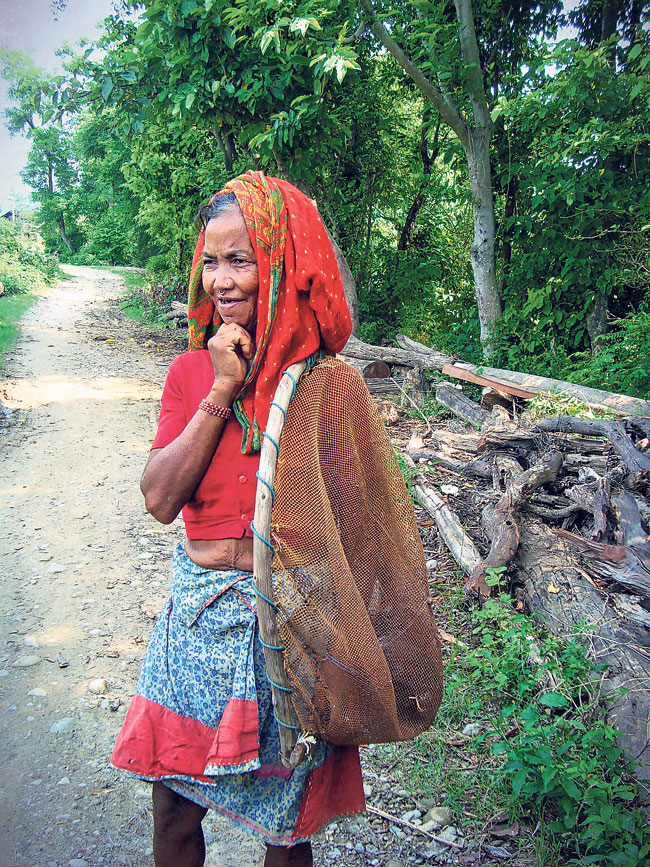
The Majhi community in Nepal is relatively small (reportedly less than 100,000) and spread across Nepal. It is a community that is mostly well under the poverty line and with low levels of education. Women are regarded as primary decision makers within the family and they participate equally in this traditional occupation of fishing.

A group of women in Pokhara soak cotton battis (lamps) in oil prior to a ceremony of lighting 100,000 such lamps as part of a religious ritual. The gender roles within Hinduism are both strict and profoundly different. Females take on the tasks of daily rituals but are yet excluded in at least two ways: during menstruation and from organized religion.
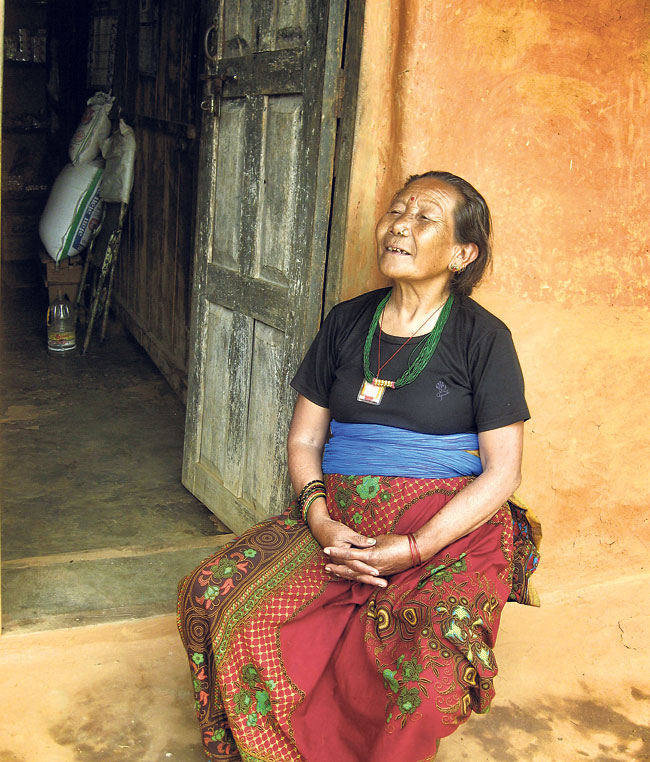
An old Gurung woman wearing what is colloquially referred to as ‘lungi’ poses in front of her house in Lamjung district, Western Nepal. For a long time, the lungi (a specific kind of wrap cloth) was associated with wives or relatives of military migrants, commonly referred to as the Lahures.
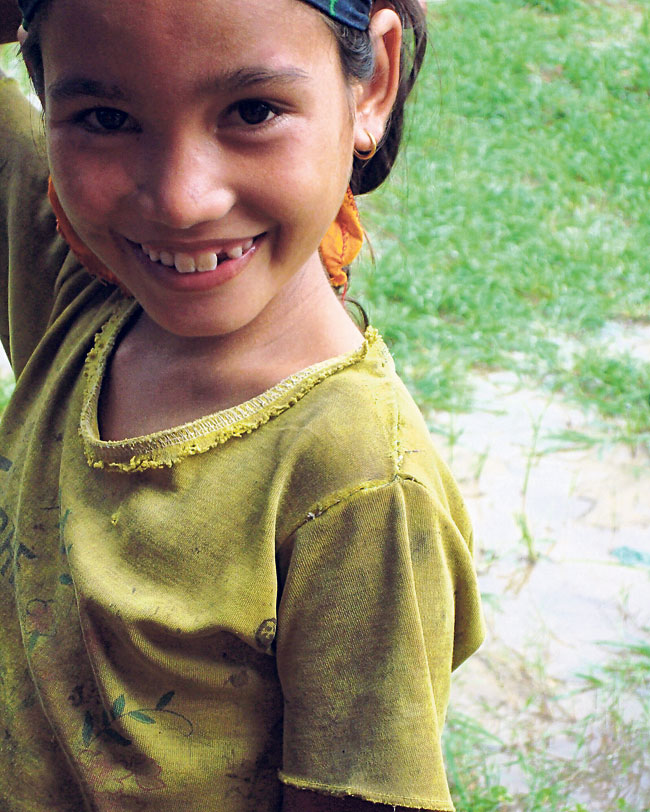
A little girl smiles in Dhangadhi in Far Western Nepal where a social custom associated with menstruation called Chhaupadi continues to affect young girls and women alike. Menstruation is a taboo subject in Nepal: something that is not usually up for discussion and the knowledge of which is to be shared in hushed tones and behind locked doors.
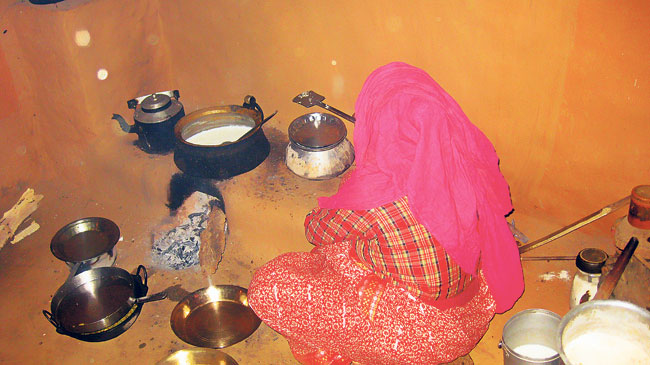
A woman (my aunt) cooking the meal over firewood for the whole family including her guests in her home in Baglung district, Western Nepal. When I was first married, I was taught to cook for the family and to definitely wait on my in-laws/husband as they ate. This felt like unusual advice to someone who had seen both parents eating together before rushing to their respective offices every morning.
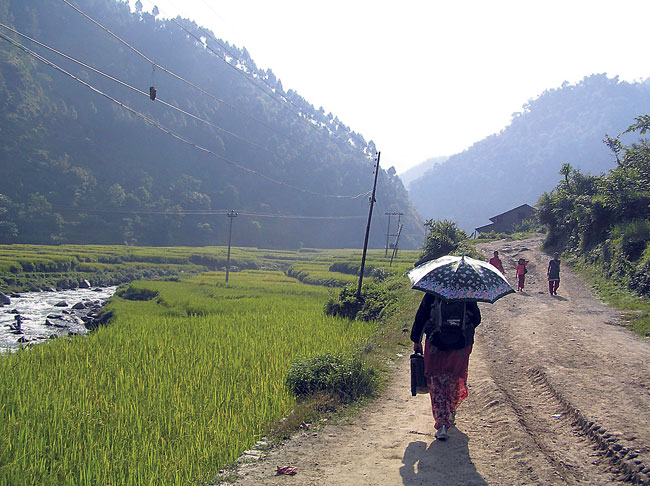
A female researcher makes her way into the morning sun to interview a survivor of sexual violence while three young girls from the nearby village are seen to be walking towards her. Conducting first-hand research on taboo topics such as sexual violence is no joke in Nepal. While there is the risk of endangering the survivor, there is also the added trauma of repression for the researchers themselves.
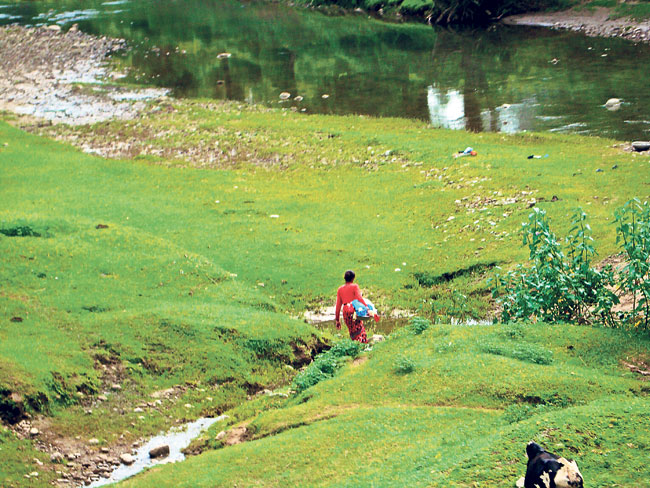
Take me to the river has another meaning in the developing world context. Forget ablution and washing away your sins; this is about the hard labor of washing your dirty laundry in public...literally! As we embrace the urban transition, it is too easy to forget that washing machines are (were) not (always) the norm.
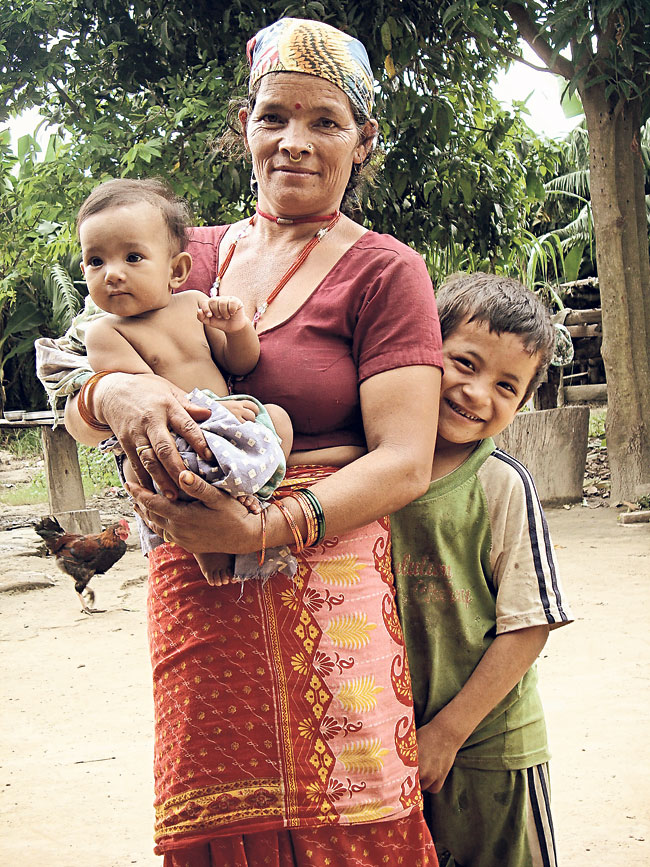
A grandmother poses with her two grandkids in Dhangadhi, Far Western Nepal. I was lucky to have two incredible grannies. Since my brother and I are just 10 months apart, the mothering duties passed from my very pregnant mother to her mother, who was more than happy to take me in. She’d later reminisce fondly about re-heating the formula many times during the day/night because I was such a fussy eater.
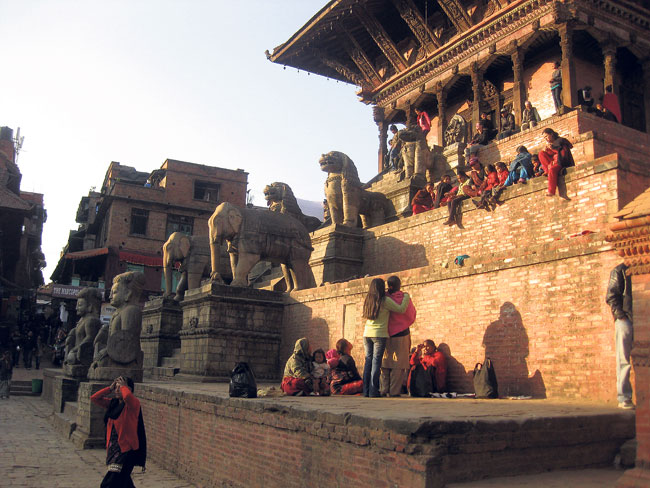
A group of women and children bask in the afternoon sun on the stairs of the five-storied Nyatapola temple in Bhaktapur, Nepal.
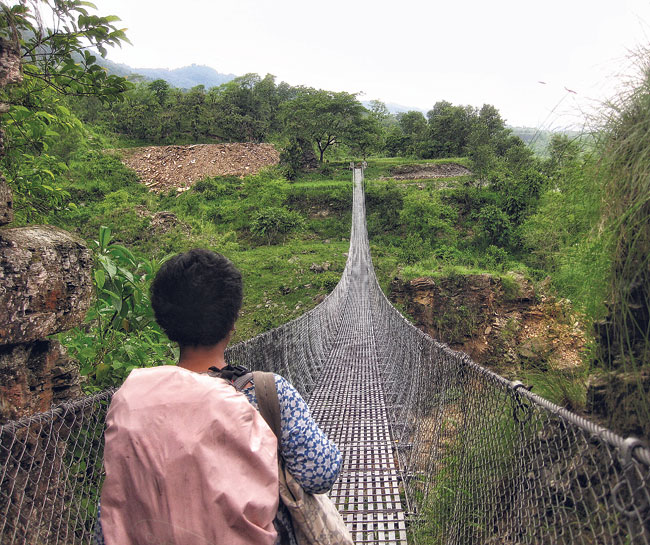
My fellow researcher crossing through a suspension bridge from one VDC to the other in Kaski district, carrying all her luggage, every bit a (temporary) migrant herself, on a quest to find female migrants. Women as migrants are invisible to the state, and no matter their importance to sustaining households, their contribution at a larger level is not visible because the simplest of data on them is missing to begin with.
shai.sharma7@gmail.com
You May Like This
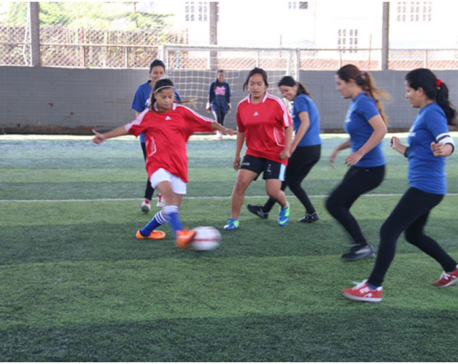
Futsal for the women, by the women and of the women!
KATHMANDU, March 19: WE United Project launched the Mahila Premier League (MPL) on March 18 at Grassroots Recreational Center in Mandikhatar. ... Read More...

Leader Dahal urges women to be united for meaningful women participation
KATHMANDU, June 15: CPN-Maoist Centre Chairperson Pushpa Kamal Dahal has urged the women folks to be united for their meaningful... Read More...
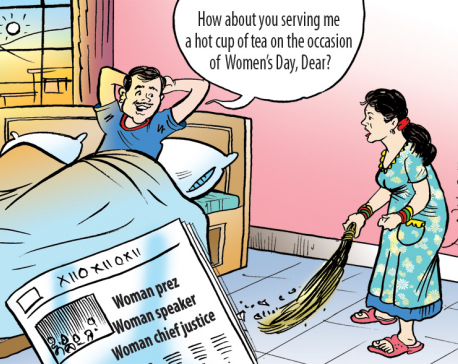
Is women empowerment just women employment?
If this day is to celebrate your and my achievements, then it does not need to be marked in the... Read More...




Just In
- Health ministry to conduct ‘search and vaccinate’ campaign on May 13
- Indian customs releases trucks carrying Nepali tea, halted across Kakarbhitta
- Silent period for by-election to begin from midnight
- SC issues short-term interim order to govt and TU not to take immediate action against TU legal advisor Khanal
- National consultation workshop advocates to scale up nutrition smart community in Nepal
- Patan High Court issues short-term interim order to halt selection process of NTB’s CEO
- NEPSE inches up 0.15 points; daily turnover increases to Rs 2.53 billion
- Bagmati Govt mandates tri-lingual signboards in offices














Leave A Comment